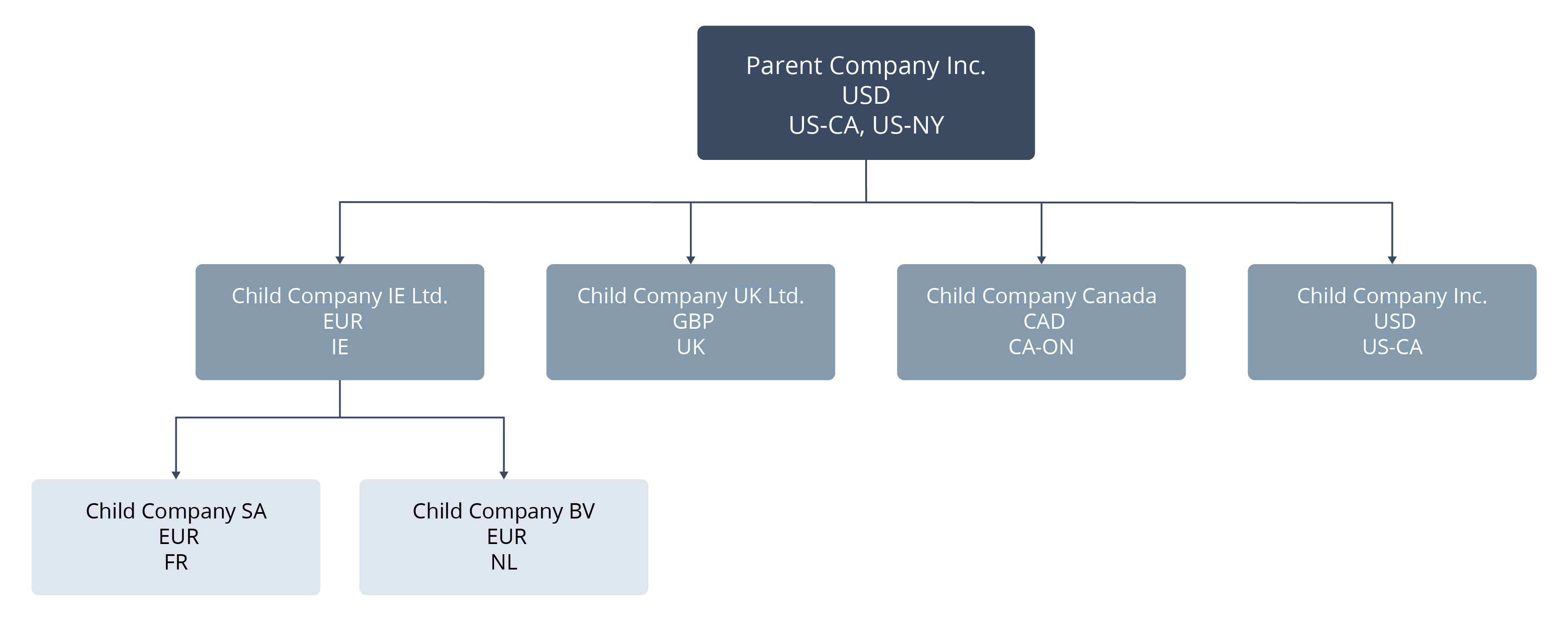Subsidiaries in OneWorld
NetSuite OneWorld enables you to manage data for a hierarchical structure of separate legal entities (subsidiaries). This structure is organized as a tree that rolls up to a root, or top-level parent subsidiary. The root subsidiary is the highest-level subsidiary in your account, and all other subsidiaries are below it in the hierarchy. If your account was upgraded to OneWorld, the preexisting data is used for the root subsidiary.
Subsidiary licenses are sold on a per-country and currency combination. You can have 250 subsidiaries in your OneWorld account, including the root subsidiary. If you require more than 250 subsidiaries, contact your NetSuite account representative for pricing information.
License fees for subsidiaries do not include charges for elimination subsidiaries, and elimination subsidiaries do not count toward the maximum of 250 subsidiaries. Inactive subsidiaries also do not count toward the maximum.

Each subsidiary represents a separate company within your global organization. Subsidiaries can be international or domestic. When you create a subsidiary record in OneWorld, the country you define for its address determines the NetSuite edition. It also determines the tax nexus associated with that subsidiary.
In addition to the subsidiaries representing your organization's separate legal entities, you must create elimination subsidiaries for use in balancing consolidated financials. Each OneWorld transaction generally posts to a single subsidiary, with the exception of transactions between two or more subsidiaries. Intercompany transactions include intercompany sales and purchases, intercompany inventory transfers, cross subsidiary fulfillment and return, and advanced intercompany journal entries. Because intercompany transactions post to two or more subsidiaries, the revenue and expenses must be eliminated at the consolidated level to maintain balanced financials. OneWorld uses elimination journal entries, associated with elimination subsidiaries, to maintain this balance. For more information, see Elimination Subsidiaries.
Related Topics
- Subsidiary Hierarchy Planning
- Multiple Currencies in OneWorld
- Nexuses and Taxes in OneWorld
- NetSuite Editions Overview
- Introduction to NetSuite OneWorld
- Subsidiary Setup
- Set up NetSuite OneWorld
- Intercompany Preferences
- Intercompany Framework
- Automated Intercompany Management
- Viewing Open Intercompany Balances
- Subsidiary Settings Manager
- Associate Subsidiaries with Entities and Items
- Consolidated Reporting in OneWorld
- Subsidiary Navigator
- OneWorld ERP Accounting
- OneWorld CRM
- OneWorld and SuiteCommerce